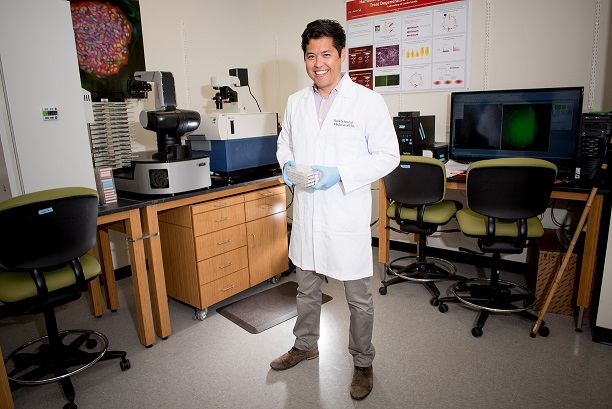Too many acronyms? Not to worry. It is all perfectly clear in the news release we just sent out about this.

A new collaboration between the California Institute for Regenerative Medicine (CIRM) and the Chan Zuckerberg Initiative (CZI) will advance scientific efforts to respond to the COVID-19 pandemic by collaborating on disseminating single-cell research that scientists can use to better understand the SARS-CoV-2 virus and help develop treatments and cures.
CIRM and CZI have signed a Memorandum of Understanding (MOU) that will combine CIRM’s infrastructure and data collection and analysis tools with CZI’s technology expertise. It will enable CIRM researchers studying COVID-19 to easily share their data with the broader research community via CZI’s cellxgene tool, which allows scientists to explore and visualize measurements of how the virus impacts cell function at a single-cell level. CZI recently launched a new version of cellxgene and is supporting the single-cell biology community by sharing COVID-19 data, compiled by the global Human Cell Atlas effort and other related efforts, in an interactive and scalable way.
“We are pleased to be able to enter into this partnership with CZI,” said Dr. Maria T. Millan, CIRM’s President & CEO. “This MOU will allow us to leverage our respective investments in genomics science in the fight against COVID-19. CIRM has a long-standing commitment to generation and sharing of sequencing and genomic data from a wide variety of projects. That’s why we created the CIRM genomics award and invested in the Stem Cell Hub at the University of California, Santa Cruz, which will process the large complex datasets in this collaboration.”
“Quickly sharing scientific data about COVID-19 is vital for researchers to build on each other’s work and accelerate progress towards understanding and treating a complex disease,” said CZI Single-Cell Biology Program Officer Jonah Cool. “We’re excited to partner with CIRM to help more researchers efficiently share and analyze single-cell data through CZI’s cellxgene platform.”
In March 2020, the CIRM Board approved $5 million in emergency funding to target COVID-19. To date, CIRM has funded 17 projects, some of which are studying how the SARS-CoV-2 virus impacts cell function at the single-cell level.
Three of CIRM’s early-stage COVID-19 research projects will plan to participate in this collaborative partnership by sharing data and analysis on cellxgene.
- Dr. Evan Snyder and his team at Sanford Burnham Prebys Medical Discovery Institute are using induced pluripotent stem cells (iPSCs), a type of stem cell that can be created by reprogramming skin or blood cells, to create lung organoids. These lung organoids will then be infected with the novel coronavirus in order to test two drug candidates for treating the virus.
- Dr. Brigitte Gomperts at UCLA is studying a lung organoid model made from human stem cells in order to identify drugs that can reduce the number of infected cells and prevent damage in the lungs of patients with COVID-19.
- Dr. Justin Ichida at the University of Southern California is trying to determine if a drug called a kinase inhibitor can protect stem cells in the lungs and other organs, which the novel coronavirus selectively infects and kills.
“Cumulative data into how SARS-CoV-2 affects people is so powerful to fight the COVID-19 pandemic,” said Stephen Lin, PhD, the Senior CIRM Science Officer who helped develop the MOU. “We are grateful that the researchers are committed to sharing their genomic data with other researchers to help advance the field and improve our understanding of the virus.”
CZI also supports five distinct projects studying how COVID-19 progresses in patients at the level of individual cells and tissues. This work will generate some of the first single-cell biology datasets from donors infected by SARS-CoV-2 and provide critical insights into how the virus infects humans, which cell types are involved, and how the disease progresses. All data generated by these grants will quickly be made available to the scientific community via open access datasets and portals, including CZI’s cellxgene tool.


